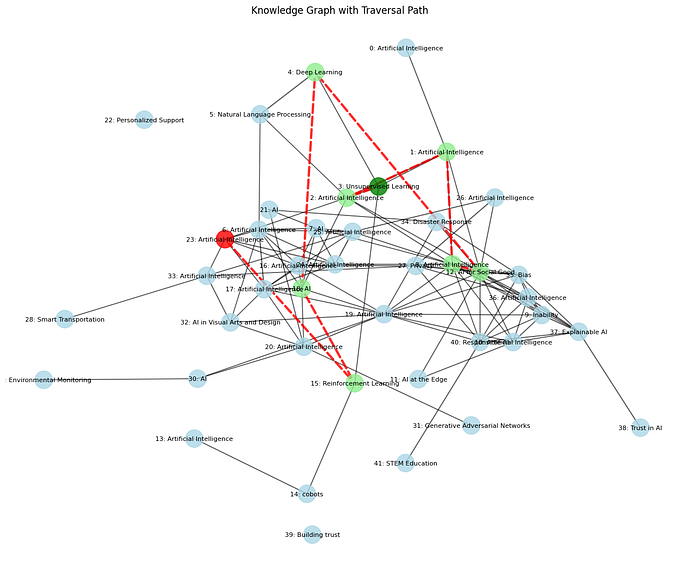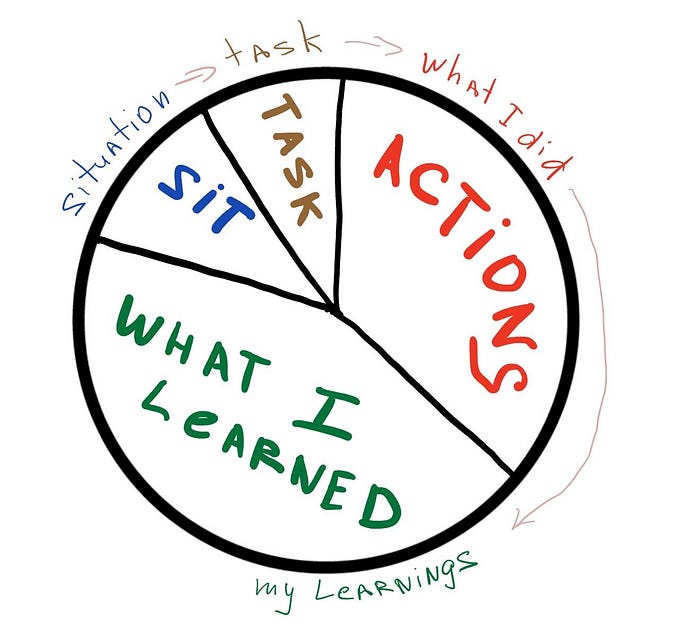Understanding the Employment Authorization Document (EAD) and OPT for F-1 Visa Students
You might wonder what an EAD and an OPT is. This article will answer that question and a lot more!
What is EAD?
An Employment Authorization Document (EAD) is a critical component for F1 visa students in the United States who wish to engage in certain types of employment during their studies. The EAD, also known as Form I-766, grants temporary employment authorization to noncitizens. For F1 students, obtaining an EAD is essential for participating in Optional Practical Training (OPT) or, in some cases, Curricular Practical Training (CPT).
What is OPT?
OPT allows F1 students to work in the United States in a job directly related to their major area of study. The U.S. Citizenship and Immigration Services (USCIS) grants OPT, and students can use it either before or after completing their academic program. The main purpose of OPT is to provide students with practical experience that complements their academic learning.
Significance of both for F1 Visa Students
The EAD allows F1 visa students to gain practical work experience in their field of study. We’ll help clarify this more in this article. This work experience is not only beneficial for their academic growth but also enhances their professional skills and employability. The two primary types of employment that require an EAD are:
1. Optional Practical Training (OPT):
This is temporary employment directly related to the student’s major area of study. Students can apply for OPT during their studies (pre-completion) or after completing their degree (post-completion). OPT is not the same as work-study or internships. It is a program that on approval allows to pursue any professional experience including an internship.
2. Curricular Practical Training (CPT):
CPT allows students to engage in internships or work that is integral to their curriculum. Although CPT usually doesn’t require an EAD, some specific circumstances might necessitate it.
Eligibility for EAD
To qualify for an EAD, F1 students must meet certain eligibility criteria:
- Enrollment: The student must have been lawfully enrolled on a full-time basis for one full academic year.
- Good Academic Standing: The student must maintain good academic standing at their institution.
- Employment Authorization: The student must seek employment authorization for OPT or specific CPT situations.
- Field of Study: The employment must be directly related to the student’s major area of study. The term “field of study” refers to the specific area or discipline that a student is focusing on during their education. For F1 visa students, this is the subject or major in which they are enrolled and pursuing a degree. The field of study encompasses the academic courses, research, and practical experiences related to that discipline. For example, if a student is majoring in Computer Science, their field of study would include all subjects, projects, and practical work related to computer science and its various subfields, such as software development, cybersecurity, or artificial intelligence.
Types of OPT
There are three main types of OPT for which students can apply:
- Pre-Completion OPT: Available to students who are not yet finished with their studies. Students can work part-time (up to 20 hours per week) while school is in session or full-time when school is not in session. To apply for pre-completion OPT, you must have been enrolled in a full-time academic program for at least one full academic year (typically 9 months) on a valid F1 visa. This means you need to have completed one academic year of full-time study before you can be eligible to apply for pre-completion OPT.
- Post-Completion OPT: Available after the student completes their degree. Students can work full-time during this period.
- STEM OPT Extension: For all majors, you could apply for a maximum one year OPT. However, for those studying STEM degrees, this extension allows for an additional 24 months of OPT. It is available to students who have earned a degree in Science, Technology, Engineering, or Mathematics (STEM) and are employed by an employer enrolled in the E-Verify program.
When you apply for Optional Practical Training (OPT), you are also applying for an Employment Authorization Document (EAD). The EAD is the official card issued by the U.S. government that authorizes you to work in the United States during your OPT period.
So, the application process for OPT includes the steps to get an EAD. Once your OPT application is approved, you will receive the EAD, which serves as proof of your work authorization.
Here is a step-by-step guide on how to obtain an EAD.
How to Apply for an EAD
The process of applying for an EAD involves several steps, detailed below:
Step 1: Obtain a Recommendation from Your DSO
Before applying for an EAD, F1 students must receive a recommendation from their Designated School Official (DSO). The DSO will update the student’s SEVIS (Student and Exchange Visitor Information System) record and issue a new Form I-20 with the recommendation for OPT.
Step 2: Complete Form I-765
Form I-765, Application for Employment Authorization, is the primary form used to apply for an EAD. The form can be downloaded from the USCIS website and looks like this.
Here’s a step-by-step guide to filling out Form I-765:
Part 1: Reason for Applying — Check the appropriate box to indicate whether you are applying for initial permission to accept employment, a replacement EAD, or renewal of your EAD. For first-time OPT applicants, select “Initial permission to accept employment.”
Part 2: Information About You:
- Provide your full legal name, including any other names you have used.
- Enter your U.S. mailing address. This is where USCIS will send your EAD and other correspondence.
- Include your country of citizenship or nationality, place of birth, and date of birth.
- Provide your I-94 Arrival-Departure Record number, which can be obtained from the U.S. Customs and Border Protection website.
- Enter your SEVIS number, found on your Form I-20.
Part 3: Processing Information: Specify your eligibility category. For pre-completion or post-completion OPT, use code ©(3)(B). For STEM OPT extension, use code ©(3)©.
Part 4: Additional Information: Include any additional information requested, such as previous employment authorization details.
Part 5: Signature: Sign and date the form. If someone helped you prepare the form, they must also complete and sign the Preparer’s Certification section.
Step 3: Gather Supporting Documents
Along with Form I-765, you must submit several supporting documents.
- Form I-20: A copy of the Form I-20 with the DSO’s recommendation for OPT.
- Passport: A copy of your passport identification page.
- Visa: A copy of your F1 visa.
- I-94: A copy of your I-94 record (Arrival/Departure Record Card).
- Photos: Two identical passport-style photos taken within the last 30 days. Write your name and I-94 number on the back of each photo.
- Payment: A check or money order for the application fee, made payable to the U.S. Department of Homeland Security. Check the USCIS website for the current fee.
Step 4: Submit Your Application
Compile Form I-765, the supporting documents, and the application fee. Mail the complete application package to the appropriate USCIS Lockbox Facility based on your location. The address can be found in the Form I-765 instructions on the USCIS website.
Step 5: Track Your Application
After USCIS receives your application, you will receive a receipt notice (Form I-797). Form I-797 is sent to immigrant and non-immigrant visa applicants to inform them that their application has been received or approved — which is why it is sometimes called a “receipt notice” or “approval notice”. This notice will include a receipt number that you can use to track the status of your application on the USCIS website.
Step 6: Receive Your EAD
If your application is approved, you will receive your EAD card in the mail. This card serves as proof of your authorization to work in the United States.
When to Apply for an EAD
Timing is crucial when applying for an EAD, especially for OPT. Here are some guidelines:
- Pre-Completion OPT: Apply up to 90 days before the completion of your first academic year, provided you do not intend to begin employment before completing the first year.
- Post-Completion OPT: Apply up to 90 days before and no later than 60 days after your program end date. USCIS must receive your application within this timeframe.
- STEM OPT Extension: Apply up to 90 days before your current post-completion OPT expires.
Applying early is recommended to avoid potential delays that could impact your ability to work.
If you have applied for an Employment Authorization Document (EAD) for OPT but have not received it by the time you wish to start working, you must wait until you receive the EAD before you can begin employment. Here are some key points regarding the timeline and what you can do if there are delays:
- Processing Time: The U.S. Citizenship and Immigration Services (USCIS) processing time for OPT EAD applications can vary but typically ranges from 3 to 5 months. It is important to apply as early as possible within the allowed time frame, which is up to 90 days before your program end date and no later than 60 days after your program end date for post-completion OPT.
- Application Status: You can check the status of your application on the USCIS website using the receipt number provided when you submitted your application. This can help you track the progress and see if there are any updates or requests for additional information.
- Expedited Processing: In certain situations, you may be eligible to request expedited processing of your EAD application. USCIS considers requests for expedited processing on a case-by-case basis for reasons such as severe financial loss to the company or person, emergencies, or humanitarian reasons. You would need to provide evidence supporting your request for expedited processing.
- Start Date: You cannot begin working until you have received your EAD card and the start date on the card has arrived. Working without proper authorization can jeopardize your visa status.
If there are significant delays and you have not received your EAD close to the expected start date of your employment, you should inform your prospective employer about the situation. Most employers familiar with the OPT process understand the potential for delays and might be flexible with your start date. It’s best to contact your Designated School Official (DSO) for guidance.
Things to Look Out For
- Accuracy and Completeness: Ensure all information on Form I-765 and supporting documents is accurate and complete to avoid delays or denials.
- Timely Submission: Submit your application within the specified timeframe to ensure it is processed before your desired start date.
- Document Tracking: Keep track of all documents and correspondence from USCIS. Use the receipt number to monitor your application’s progress online.
Wrapping up
We just saw how obtaining an Employment Authorization Document (EAD) is a vital step for F1 visa students seeking practical work experience through OPT. It might be a lot of information but by following the outlined steps and paying close attention to the application requirements and deadlines, you can successfully navigate the process and gain valuable employment experience in their field of study. Remember, proper preparation and timely submission are key to ensuring a smooth application process and maximizing the benefits of the EAD!
Hey, I’m Krish! A fellow international student and the founder and CEO of roam. roam is an ecosystem that simplifies international student migration by putting together all the resources students need to start their lives in a new country in one place. We do this by publishing informative articles (like this one), creating personalized tools on our website, and building digital and in-person communities for international students.
If you have any questions regarding starting a life in the U.S. as an international student, feel free to reach out! We’re here to help :)






